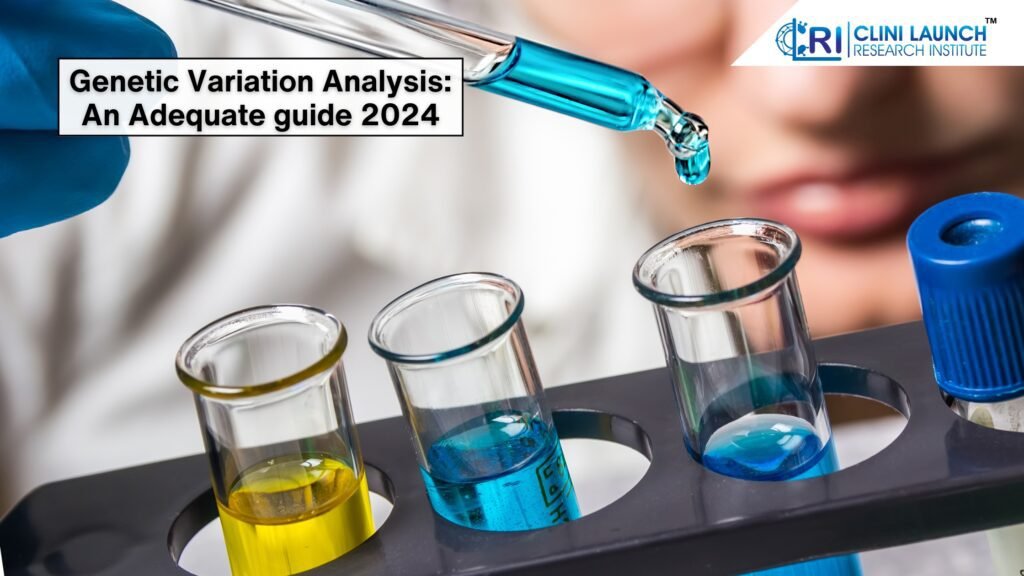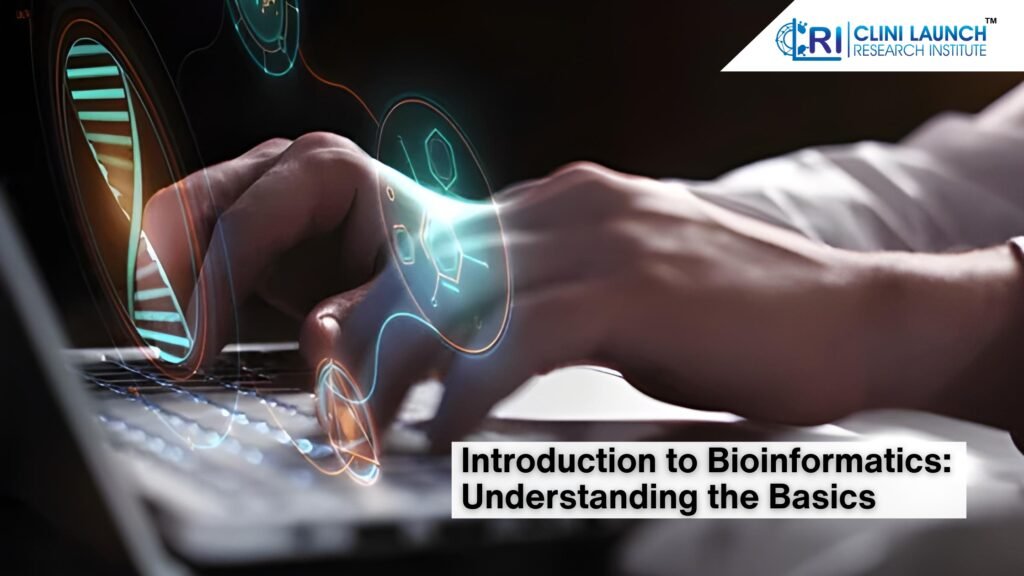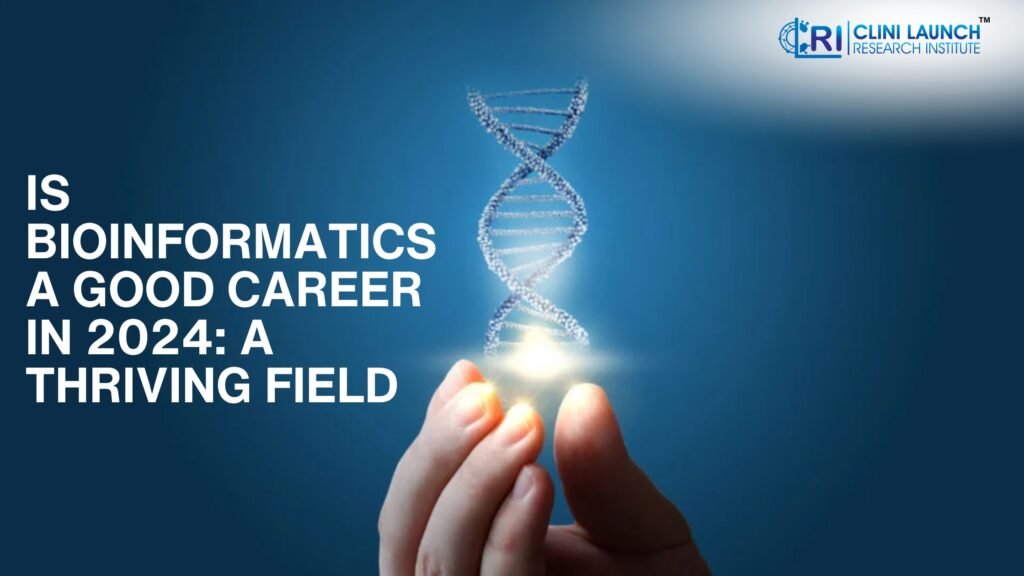An Adequate Guide to Genetic Variation Analysis 2024

Numerous genetic variation analysis is woven throughout the fabric of humanity. Every person is a distinct chapter in this elaborate tale, bearing the blueprint for their biological composition and the echoes of ancestral travels in their DNA. Genetic Variation Analysis is the scientific exploration of these genetic threads, a quest to decipher the patterns and differences that define us as a species. Understanding population genetics – the study of genetic diversity within and between populations – is at the core of this field’s objectives. By studying the complexities of the human genome, scientists are learning a great deal about the evolutionary history of humans, migration patterns, and the genetic bases of both health and disease. Want to learn more about genetics! Join bioinformatics program. Fundamentally, the goal of this field is to comprehend population genetics research, which is the study of genetic variation both within and between populations. Researchers are discovering a wealth of knowledge about human history, migration, and the genetic foundations of both health and sickness by examining the intricacies of the human genome. Two potent approaches, demographic history analysis and genome-wide association studies (GWAS), are at the centre of this investigation. GWAS scans the entire genome to identify genetic variants associated with specific traits or diseases, offering a window into the genetic architecture of complex phenotypes. Population bottlenecks, admixture patterns, and migratory patterns are all revealed by demographic history analysis, which reconstructs the evolutionary history of populations. When combined, these instruments offer an all-encompassing structure for examining the complex connection between human variation and genetics. The Complexity of Human Genetic Diversity and Population Genetics Research There exists a significant level of genetic variation among human populations. Numerous morphological and physiological qualities, ranging from obvious features like eye color and hair color to more intricate features like illness susceptibility, are exhibited by this genetic diversity. A major obstacle in the field of population genetics research is figuring out the complex mechanisms that lead to this genetic variation. The genetic variety seen in modern human populations has been greatly influenced by historical occurrences such as population bottlenecks, founder effects, and migrations. Furthermore, selection pressures from the environment – such as nutrition, climate, and disease exposure—have led to adaptations and additional genetic differentiation. It is still a difficult effort to correctly assess the contributions of these factors to genetic diversity due to their complicated interplay. Anthropological classifications and phenotypic observations were frequently the foundation of traditional population genetics research methods. Although these techniques have yielded insightful results, it is clear that they fall short of fully capturing the range of genetic diversity. It is difficult to distinguish the purely genetic component of phenotypic features since they are influenced by both genetic and environmental variables. Moreover, these techniques frequently fail to take into account the finer points of genetic diversity within populations, which could result in erroneous or simplistic depictions of population structure. On the other hand, genetic variation analysis provides a more accurate and thorough method of researching human populations. Researchers can uncover genetic variants linked to particular traits or disorders using methods like Genome-wide Association Studies, which offer important insights into the genetic makeup of complex phenotypes. Furthermore, population histories, including migration patterns, admixture events, and population size variations, can be reconstructed by demographic history analysis, providing insight into the evolutionary processes that have generated genetic diversity. Through the integration of demographic history analysis and Genome-wide Association Studies with other population genetics research techniques, scientists can gain a more comprehensive understanding of the variables influencing genetic diversity in humans. Untangling the knots of human history, addressing global health inequities, and creating focused medical solutions all depend on this information. Genetic Variation Analysis – Unlocking the Secrets of Human Genome A key component of population genetics research is genetic variation analysis, which explores the complex web of variations in DNA sequence within and between populations. These differences, which include bigger structural variants and single nucleotide polymorphisms (SNPs), offer important new information about the demographic trends, illness susceptibility, and evolutionary history of human groups. Analyzing genetic variation now uses genome-wide association studies (GWAS) as a key tool. Using genome-wide analysis of the relationships between genetic variants and certain traits or disorders, genome-wide association studies (GWAS) have completely changed our understanding of intricate genetic architectures. Through the use of this method, genetic loci associated with a wide range of human characteristics, including height, weight, and susceptibility to chronic diseases, have been identified. GWAS makes a substantial contribution to population genetics research by revealing the genetic foundations of these traits and shedding light on the intricate interactions between genetic and environmental factors. Demographic history analysis provides an additional viewpoint on genetic diversity in addition to GWAS. This method offers vital context for evaluating genetic variation data by reconstructing the historical histories of populations, including migration patterns, population bottlenecks, and admixture events. Researchers can determine population links, calculate divergence periods, and pinpoint genomic regions that have been influenced by genetic drift or natural selection by analyzing genetic markers. These discoveries are critical to comprehending how genetic variation is distributed throughout communities and how it affects human health. In the context of genetic analysis, the combination of GWAS and demographic history analysis has ushered in a new era of population genetics research discovery. Scientists can understand the intricate interactions between genetic, environmental, and historical factors that influence human variety and illness vulnerability by combining these methods. This information has enormous potential for creating focused preventative and therapeutic approaches, which would eventually enhance human health and well-being. Uncovering the Benefits of Genetic Variation Analysis through GWAS A fundamental component of modern population genetics research, genetic variation analysis provides deep insights into human health, history, and the potential for tailored medicine. Researchers can piece together the complex picture of demographic history analysis by carefully analyzing patterns of genetic variation within and between populations. This can provide light on events such as mixing, population expansions, and ancestral migrations. Genome-wide Association Studies, which systematically scan the genome to uncover
Biological Networks – Crack Nature’s Secrets | 2024

Unveiling the symphony of life – The power of biological networks The human body is a complicated system composed of billions of interconnected components that work together in exquisite harmony. Understanding the fundamental processes driving this biological symphony has been a primary goal of scientific research. In the past, researchers have taken a reductionist tack, breaking down biological systems into discrete components for examination. Although this approach has produced insightful results, it often falls short of capturing the holistic aspect of biological processes. A paradigm shift towards systems biology analysis is necessary to achieve a more thorough knowledge of biological networks. By analyzing the constituent parts of biological systems in a comprehensive manner, systems biology analysis aims to clarify the emergent characteristics of these systems. By embracing a network biology perspective, scientists can investigate the intricate interaction networks that underpin biological functions. Network biology tools make it possible to investigate how genes, proteins, and metabolites collaborate within complex biological channels that drive cellular processes and organismal behaviour. A potential foundation for understanding the processes underlying health and disease is provided by this comprehensive approach. This blog deals with the importance of biological networks in systems biology analysis. We shall examine the drawbacks of conventional reductionist techniques, the ways in which network biology tools may be used to decipher intricate biological processes, and the bright prospects for this field’s future. Unveiling the Symphony of Life – The Power of Biological Networks in Healthcare Credit: Karthik C (Graphic Designer at CliniLaunch) Living organisms are complex networks of interacting chemicals, cells, and processes rather than just collections of separate components. Genes, proteins, metabolites, and signalling pathways are all part of these biological networks, which work together to coordinate essential bodily processes. But historically, researchers have frequently taken a reductionist stance, concentrating on the examination of discrete elements within biological systems. Although this approach has produced insightful results, it falls short of providing the whole picture. The interdependence of these networks is essential in dictating the health and behaviour of individual cells. Deciphering the ways in which these entities interact and impact one another is essential to understanding life’s intricacies. The limitations of this approach are most noticeable in the pharmaceutical and medical industries. Disruptions in the body’s interaction networks are frequently the cause of diseases. Researchers can learn more about the mechanisms behind disease and find possible pharmacological targets that address the underlying network-level dysfunctions by using systems biology analysis to analyse these networks This is where eminent research institutes like CliniLaunch steps in. Acknowledging the potential of biological networks to revolutionise healthcare, CliniLaunch provides a thorough Bioinformatics curriculum that gives students the tools they need to succeed in this fascinating sector. Harnessing the Power – Network Biology Tools and Systems Biology Analysis Credit: Karthik C (Graphic Designer at CliniLaunch) The complex interactions that exist between different biological elements are metaphorically represented by biological networks. Researchers see the intricate interconnections inside a biological system by looking at these networks, which show the relationships and exchanges between genes, proteins, and metabolites. Researchers begin to comprehend how network disruptions may result in cellular malfunction and illness by employing these tools to analyze these interaction networks. The fast-developing discipline of network biology studies biological systems as a whole using methods from network analysis and concepts from network biology. To provide thorough models of biological processes, this all-encompassing method incorporates information from several sources, such as proteomics, metabolomics, and genomes. These models are useful for both identifying possible therapeutic targets and forecasting cellular behaviour. Detailing the discussion out… Biological networks may be visualized and analyzed by academics using tools such as Cytoscape and STRING. Scientists can discover possible therapeutic targets and learn more about the underlying mechanics of biological occurrences by studying the structure and characteristics of these networks. Network biology tools, such as Cytoscape and STRING, allow researchers to visualize and analyze biological networks. By examining the topology and properties of these networks, scientists can gain insights into the underlying mechanisms of biological phenomena and identify potential drug targets. CliniLaunch’s Bioinformatics course delves into training professional with the skillset and practical expertise with such tools. Students can gain hands-on experience utilizing these tools to analyze biological networks and explore the intricate details in the cells. This program equips individuals with the expertise to contribute to groundbreaking research in areas like drug discovery, personalized medicine, and understanding the complex etiology of diseases. Learn more about CliniLaunch’s Bioinformatics program here: https://clinilaunchresearch.in/best-bioinformatics-training-institute-in-india/ Unveiling Hidden Insights and Driving Innovation Credit: Karthik C (Graphic Designer at CliniLaunch) Biological networks provide a wealth of information on the complex mechanisms of living organisms. Analyzing these networks using the right analysis techniques and utilizing network biology tools, researchers may uncover a plethora of information that was previously unattainable using conventional methods. Finding new therapeutic targets is one of the main advantages. Scientists can create more specialized treatments that target the underlying causes of disease by identifying key nodes within disease-associated interaction networks. This opens the door for personalized medicine approaches, in which a patient’s specific biological network profile may be taken into account when creating a treatment plan. Moreover, biological networks provide insight into the intricate course of disease development. Through the examination of the dynamic shifts that occur within these networks throughout time, scientists can learn more about the evolution of illnesses. This information is essential for creating more successful therapies that can stop the advancement of the disease at critical junctures. Furthermore, biological networks shed light on intricate biological processes other than illness, like cell differentiation and development. By examining how genes and proteins interact inside. The Future: A Networked Approach to Healthcare The ongoing study of biological networks has a big potential for the future of healthcare. This method has the power to completely change treatment plans, diagnosis procedures, and even preventative care. Clinicians may be able to create individualized diagnostic tools that provide a more complete picture of a patient’s health by examining specific biological networks. With this data,
Bioinformatics Basics: Unleash Biological Data in 2024

The field of biology is rapidly evolving, demanding skilled professionals who can bridge the life sciences with computational power. Enter bioinformatics! Bioinformatics Basics: Awaiting World of Discovery Bioinformatics applies computer science and information technology to biological data. It empowers researchers to analyze, interpret, and organize vast amounts of information like DNA sequences, protein structures, and gene expression data. This analysis unveils hidden patterns, predicts functions, and ultimately leads to breakthroughs in medicine, agriculture, and beyond. Computational Biology use in Bioinformatics Computational biology, a core aspect of bioinformatics, utilizes algorithms and software tools to analyze complex biological data. CliniLaunch’s bioinformatics course equips you with the expertise to leverage these tools effectively for tasks like: Ready to join the Program? Click here. Data Analysis in Bioinformatics Bioinformatics is all about extracting meaningful insights from massive datasets. Our Post Graduate in Bioinformatics program trains you in: Ready to join the Program? Click here. Bioinformatics Genomic Sequencing Genomics has revolutionized biology, and bioinformatics plays a central role in analyzing the vast amount of data generated by genomic sequencing. Our Post Graduate Diploma in Bioinformatics course will equip you to: Basic to Advance in Bioinformatics CliniLaunch’s bioinformatics course goes beyond the fundamentals. We offer training in: Strengthening Your Bioinformatics Arsenal In addition to these core skills, we delve into specialized areas like: Ready to join the Program? Click here. Career Potential After Bioinformatics A career in bioinformatics opens doors to exciting opportunities! Our program equips you with the skills to thrive in roles like: These are just a few examples. With a strong foundation in bioinformatics, you can pursue a fulfilling career at the forefront of scientific discovery. If you have a background in biotechnology, biomedical science, bioengineering, medical laboratory technology, computer science, data science, chemistry, molecular biology, botany, microbiology, or hold a BSc. or MSc. degree, and are below 35 years old, then this course is for you! Unlock the exciting world of bioinformatics with CliniLaunch! Fill up the form – enroll today. Download the brochure, if you want more information related to the program.
The Best Top 5 Bioinformatics Advancements in 2023

The Bioinformatics field came with numerous advancements in 2023. It has transformed the field of biological research. Yes, there are multiple discoveries to advance the understanding of complex biological processes that have led to new treatments and therapies. In this blog, you will explore the top 5 bioinformatics advancements in 2023 and based on how the field of bioinformatics advancements impact it. Get ready to learn about the advancements in bioinformatics! Top 5 Bioinformatics Advancements in 2023: According to Fios Genomics, Single-Molecule Protein Sequencing analysis is in consideration for further research and study in the field of bioinformatics. Moreover, single-molecule protein sequencing will be the main theme for the future of bioinformatics while understanding things on a granular level is a new possible new trend that we need to watch out for in 2023. Human Genome Retelling: A Modern-Day Odyssey In the year 2003, the human genome is concluded officially which was scaled at 92%. The scale is a remarkable feat by itself but also presented in the technological landscape. But, in recent days, the advancement took place to short or incorporate the shortcomings. However, the consortium led by researchers at the NIH, USA tasked to tackle the remaining 8% scale. To understand how bioinformatics is changing healthcare, the study of the human genome was accomplished through long-read sequencing technology where the sample DNA need fragmentation in short with approx 400 bps maximum. Ultra-Fast DNA Sequencing Within 5 hrs and 2 minutes, the entire genome of the patient was sequenced. The entire sequencing and diagnosis were achieved in 7hrs and 8 minutes, assigning the failing patient’s heart to myocarditis. Ultra-fast DNA sequencing comes second in the top 5 bioinformatics advancements in 2023 with a different approach. However, the approach to DNA sequencing was achieved at Stanford University by stretching long-read sequencing technology with a DNA analyzer that specifically performs with 48 flow cells in tandem and has bagged the Guinness World Record. ESMFold: Meta’s Protein Structure Prediction Model The amino acid sequence long-accepted concept that shapes protein structure dominates its activity that determines the functional impacts of change in genetics and in designing new drugs. Simultaneously, predicting the protein structure from their sequences is a daunting task and it is better to take help from new bioinformatics tools and technologies to make make it work. The number of prediction models available with different essential algorithms makes it possible to differentiate and generate accurate results. AlphaFoldDB: Predicted structure Atlas of the Protein Universe A data repository (AlphaFoldDB) was developed as a means to make available the protein structure predictions for accessibility. In July 2021, it is held more than 3 lakh protein structure predictions that include mice and the entire human genome. Recently, after its geneticist for over a year, the database contains more than 200 million structures that account for 1 million species. The database contains one million species which is nearly all known proteins. The content is 23-terabyte held within the database specifically with a promise to accommodate the new organism discovery. The databases are expected to produce leaps and bounds in the life science field. Simulation of a living cell The invocation of a cell with a computerized model predicts its biology. Uncovering the new ones was answered through a study conducted by the University of Illinois scientists. The scientists understood the importance of starting small instead of going big directly, so they developed a minimal cell, JCVI-syn3A. Simulations of a living cell also set the bioinformatics trends in 2023, they focus on the minimal cell, that contains JCVi-syn3A with only 493 genes termed essential for survival with approx half of its parental genome. However, with extensive research and study of the cell wall composition, biochemistry, and cell protein machinery, the simulated model was developed with all pieced together with the help of collaborators. The study or experiment of cell behaviour that clashes with a few of others’ observations introduces new mechanisms and interactions existence. The study specifically aimed at advancement in incorporating the interactions driven by biophysics and biochemicals to get a more comprehensive understanding of a living cell. CONCLUSION The top 5 bioinformatics advancements in 2023 have been significantly helpful to understand the biological system and processes. Starting from the identification of new genetic markers for diseases to untangling the complexity of gene regulation, these advancements can revolutionize agriculture, healthcare and several other fields. However, the rapid pace in the field of bioinformatics research become a powerful testament to computational new bioinformatics tools and technologies that drive scientific progress. If we look further into the future, bioinformatics sets it apart and continues to play a crucial role. It unlocks the life mysteries that pave the way to new innovative solutions to some of the most pressing challenges in the world. By enrolling in the Clini Launch Research Institute’s bioinformatics course, you can learn more about the advancement in the field of bioinformatics and how you can apply it to solve real-world problems. To learn more, register at https://clinilaunchresearch.in/bioinformatics-course-online/.
Is Bioinformatics a Good Career in 2024: A Thriving Field

Bioinformatics is a multidisciplinary field combining statistics, biology, computer science, engineering, and mathematics to analyze and decipher biological data. Now, is bioinformatics a good career in 2024? Yes, it is one of the most promising and rapidly evolving career fields in science and technology. It has applications in various domains such as health care, agriculture, biotechnology, environment, forensics, etc. But is bioinformatics a promising career in India? What are the opportunities and challenges for bioinformatics professionals in the Indian context? How can one pursue a successful career in bioinformatics in India, or does bioinformatics have a future? This blog will answer these questions and provide valuable tips and resources for aspiring bioinformaticians. Is Bioinformatics a good career in 2024? India has a massive potential for bioinformatics, as it has a large pool of talented and skilled professionals, a rich biodiversity, a growing biotechnology sector and a supportive government policy. Now, “Is bioinformatics a good career in 2024?” The answer is yes, which is based on Grand View Research. The global market size of bioinformatics was explicitly valued at $8.6 billion in 2019, with an expected growth of 13.4% CAGR from 2020-27. India is one of the key players in this market, with a CAGR of 14.9% from 2019 to 2025. Want to Learn Bioinformatics for your Career Growth! Register Now. Some of the factors that contribute to the growth of bioinformatics in India are: Some of the areas where bioinformatics has a significant impact in India are: Jobs After MSc Bioinformatics Bioinformatics offers multiple career opportunities for students and professionals passionate about biology and computer science. Bioinformatics professionals can do MSc bioinformatics jobs in various sectors such as academia, research institutes, industry, government organizations, hospitals, pharmaceuticals etc. Want to Learn Bioinformatics for your Career Growth! Register Now. These are some of the popular job roles in the field of bioinformatics: Bioinformatics Salary in India The salary of a bioinformatician depends on various factors such as qualification, experience, skills, location, sector etc. According to Payscale.com, the average wage for a career in bioinformatics in India are INR 5.8 lakh per annum. However, the salary range of some typical job roles for bioinformaticians are: How to Pursue a Career in Bioinformatics in India To pursue a career in bioinformatics in India, one must have a strong biology and computer science background. One must also have good analytical, problem-solving, communication, and teamwork skills. However, various academic courses are available at different levels for BSc bioinformatics jobs. So, these are the academic certification courses that will help you achieve your career goals in the field of Bioinformatics: Besides these academic courses, various online courses and platforms provide bioinformatics education and training for students and professionals. Some of them are: Bioinformatics Skills Required in India To pursue a career or get jobs after MSc bioinformatics in India, one must have a strong biology and computer science background. One must also have good analytical, problem-solving, communication and teamwork skills. Some of the specific skills required for bioinformaticians are: Bioinformatics Career Tips for India To pursue a successful career in bioinformatics in India for MSc bioinformatics jobs in Bangalore, one needs to follow some tips and strategies such as: Conclusion In conclusion, why it is bioinformatics a good career in 2024, as it offers many opportunities and challenges for students and professionals passionate about biology and computer science. Bioinformatics can help solve various problems and answer multiple questions related to health care, agriculture, biotechnology, the environment and more. To pursue a career in bioinformatics, you need to ask yourself first that does bioinformatics have a future in India, you need to have a strong background in biology and computer science. One must also have good analytical, problem-solving, communication and teamwork skills. One can pursue various academic courses at different levels or online courses and platforms that provide bioinformatics education and training. Bioinformatics offer a wide range of career opportunities for students and professionals in various sectors such as academia, research institutes, industry, government organizations, hospitals, pharmaceutical etc. for the professionals who does MSc Bioinformatics jobs. Bioinformatics professionals can earn anywhere between INR 2.5 Lakh – INR 10 Lakh per annum depending on their qualifications, experience, skills, location, and sector. Does bioinformatics have a future means to be a promising and exciting field that can help improve the quality and efficiency of life sciences and biotechnology. Bioinformaticians can transform raw and unstructured data into valuable insights and predictions by following a systematic and rigorous process. If you are interested in learning bioinformatics for any kind of career in bioinformatics such as BSc bioinformatics jobs and know how it will benefit your career or business, register at our website: www.clinilaunchresearch.in.
5 Amazing Bioinformatics Courses in Bangalore To Boost Your Career

Bioinformatics is the science of analyzing and interpreting biological data using computational tools and techniques. There are amazing bioinformatics courses in Bangalore’s rapidly growing fields with applications in various domains such as medicine, biotechnology, agriculture, and ecology. If you are interested in pursuing a career in bioinformatics, you must have a strong biology and computer science foundation. One of the best ways to acquire these skills is to enroll in a bioinformatics course that will teach you the fundamentals and the latest developments in this exciting field. This blog post will introduce you to bioinformatics courses that will boost your career prospects and help you achieve your goals. Reputed institutions offer the best online bioinformatics courses and cover various aspects of bioinformatics, such as genomics, proteomics, machine learning, data visualization, and more. Whether a beginner or an advanced learner, you will find a course that suits your needs and interests. So, without further addition, let’s dive into the list of 5 amazing bioinformatics courses that will boost your career. Five Amazing Companies offering Bioinformatics Courses in Bangalore Clini Launch Research Institute LLP Bioinformatics courses offered by CLRI are specifically administered, customized, and specialized in modules. It focuses on the areas of Bioinformatics and covers the principles, concepts, information, and data. Clini Launch Research Institute (CLRI) provides bioinformatics courses in Bangalore to students online or in-person to enter the bioinformatics area and to the professionals advance their careers. It also offers the course curriculum to aspirants who are prone to make start their career in bioinformatics. They are fully equipped with the resources and tools that make the candidates join the course at an affordable price. BioGrademy BioGrademy providing the certification course in advance bioinformatics which is specifically designed to equip you with the information, skills and knowledge you need to succeed in the current fast-paced environment. BioGrademy offers the best online Bioinformatics Courses which is perfectly align with the professionals or students who want to grow or advance their career in bioinformatics. They are offering the course based on latest tools and techniques which is specifically used in the bioinformatics researches. NTHRYS NTHRYS is headquartered in Hyderabad providing Bioinformatics training and placement facilities to students and working professionals who are interested in the same field. They are providing the best bioinformatics courses online or in-person for the students and working professionals who are keen to advance their career in bioinformatics. Recently, they find that the demand for bioinformatics training rising above and beyond the increase in the demand for faster, more accurate, and qualitative research. NTHRYS facilitating the training based on bioinformatics which they use as a tool to correct errors with new approaches in the research and development field. Rapture Biotech Rapture Biotech provides multiple courses in the field of life sciences, healthcare, and pharmaceutical industry with the latest tools and techniques. They are well-equipped with the research tools and resources to do experiments. Rapture Biotech offers bioinformatics course for beginners to students or working professionals that will help them to have an idea about the basic tools of bioinformatics to develop drugs and vaccines which is specifically useful in medicine, biotechnology, agriculture, and molecular biology. Eminent Biosciences Eminent Biosciences provides a basic bioinformatics industry-led research training program to the students or working professionals which include multiple software and techniques. In in terms of research and development, they always recommend that students or working professionals’ do dissertation/internship for the people who pursued BTech/MTech/B.Sc./M.Sc. Eminent Biosciences specifically provides bioinformatics certificate course with internship training to the students and working professionals within the specific project duration which depends on the topic of research. However, they are offering 1 month training and 5 months project which is equal to 6 months certification course. Conclusion We hope you enjoyed reading this blog post and learned something new about bioinformatics and its courses in Bangalore. Bioinformatics is a fascinating and rewarding field that offers many opportunities for learning and growth. By taking bioinformatics courses in Bangalore, you can enhance your skills and knowledge and prepare yourself for a successful career in this domain. You can choose from the 5 amazing bioinformatics courses in Bangalore that we have listed above and apply for the one that matches your interests and goals. Moreover, these courses will provide you with theoretical and practical training in bioinformatics and help you develop your analytical and problem-solving abilities. You will also get exposure to the latest technologies and tools used in bioinformatics and interact with experts and peers in the field. So, what are you waiting for? Enroll in Clini Launch Research Institute for bioinformatics courses in Bangalore today and take your first step towards a bright future in bioinformatics.
